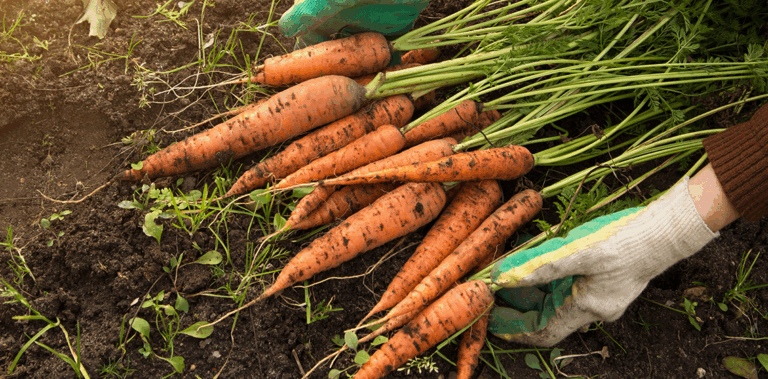Food for Beneficial Bacteria: 2’-FL, a Human Milk Oligosaccharide
Summary
2’-Fucosyllactose (2’FL) is a human milk oligosaccharide (HMO), which serves as a prebiotic in the human digestive system. 2’-FL is the most abundant HMO found in breast milk.
What is 2′-Fucosyllactose?
2′-Fucosyllactose (2’-FL) is a human milk oligosaccharide (HMO) that serves as a prebiotic in the human digestive system.1 HMOs are the first prebiotic compounds that a breastfed newborn will encounter, the prebiotic designed by nature, for humans. Discovered in the 1950s, 2’-FL is the most abundant HMO found in breast milk, making up 30 percent of all breast milk HMOs.2
All HMOs Are Prebiotics, But Not All Prebiotics Are HMOs
HMOs avoid metabolism by digestive enzymes until they reach the lower gastrointestinal (GI) tract, which allows beneficial microorganisms like Bifidobacteria to then break them down through fermentation.3,4 2’-FL is a unique prebiotic in that only certain species, primarily Bifidobacteria, can metabolize it. Thus, 2’-FL is a selective feeding source for Bifidobacteria.3 Other gut microbes, including opportunistic pathogens, have to rely on non-2’-FL sources of nourishment.5
Babies are born with a limited number of microbes encompassing their GI microbiome. When HMOs are fed to infants through breastfeeding, they facilitate the growth of a GI tract dominated by Bifidobacteria. Mothers that secrete more 2’-FL in breast milk will in turn produce larger populations of Bifidobacteria for their babies.6 Microbiomes of infants fed breast milk are also able to retain higher proportions of Bifidobacteria as the microbial population develops, and infants are continually exposed to new microbes from the environment.7
HMOs Support the Gut Barrier in the Lower GI
Healthy gut function relies on a proper GI barrier between the body and the interior space that makes up the digestive tract, called the lumen. The GI barrier is made up of many layers:8
- Luminal mucosal barrier
- Microbial inhabitants lining cells in the lumen
- Layer of mucus produced by goblet cells
- Chemical barrier
- Physical barrier of intestinal epithelial cells held together by tight junctions
- Immunological barrier
Stress, microbial invaders, antibiotic use, and development of chronic conditions can disrupt the intestinal lining. HMOs like 2’-FL stimulate the development and maintenance of a well-functioning GI barrier, both during development and in cases of GI inflammation.9-12
2’-FL Acts as a “Binding Decoy”
2’-FL is similar in structure to certain binding sites on cells of the lower GI. Because of this similarity, 2’-FL molecules can act as binding decoys to biological toxins and external microorganisms that are known disruptors of the GI to prevent them from binding surface-bound sugars.3,13,14 This activity minimizes the amount of external microorganisms such as norovirus, Campylobacter jejuni, and enterotoxigenic E. coli launching infections and triggering the inflammatory response.
In breastfed infants, this binding decoy mechanism works as an extension of the GI immune system. Thus, it is not surprising that there are lower markers for inflammation in infants fed formula with added HMOs compared to a more traditional formula with prebiotics from cow’s milk.15
In addition to acting as an important component of a newborn’s microbiome and healthy GI tract, 2’-FL also works as a targeted prebiotic for adults due to its unique tie to Bifidobacteria. For adults, 2’-FL supports short-term feeding of beneficial Bifidobacteria in times of GI stress and for individuals deficient in Bifidobacteria populations looking to increase microbiome diversity.16
- Medina, D.A., et al. (2017). Prebiotics Mediate Microbial Interactions in a Consortium of the infant gut microbiome. International journal of molecular sciences, 18(10), 2095.
- Castanys-Munoz, E., Martin, M.J., & Prieto, P.A. (2013). 2′-fucosyllactose: an abundant, genetically determined soluble glycan present in human milk. Nutr Rev, 71(12), 773-89.
- Bode, L. (2012). Human milk oligosaccharides: every baby needs a sugar mama. Glycobiology, 22(9), 1147-62.
- Hirvonen, J., et al. (2019). Selective utilization of human milk oligosaccharides 2’-FL and 3-FL by probiotic bacteria resulting in different metabolite production by these bacteria. Current Developments in Nutrition, 3(Suppl 1), nzz040.P20-012-19.
- Medina, D., et al. (2017). Prebiotics mediate microbial interactions in a consortium of the infant gut microbiome. International Journal of Molecular Sciences, 18(10), 2095.
- Thomson, P., Medina, D.A., & Garrido, D. (2018). Human milk oligosaccharides and infant gut bifidobacteria: Molecular strategies for their utilization. Food Microbiol, 75, 37-46.
- Bai, Y., et al. (2018). Fucosylated Human milk oligosaccharides and N-Glycans in the milk of Chinese mothers regulate the gut microbiome of their breast-fed infants during different lactation stages. mSystems, 3(6), e00206-18.
- Figueroa-Lozano, S., & de Vos, P. (2019). Relationship between oligosaccharides and glycoconjugates content in human milk and the development of the gut barrier. Comprehensive Reviews in Food Science and Food Safety, 18(1), 121-139.
- Grabinger, T., et al. (2019). Alleviation of intestinal inflammation by oral supplementation with 2-Fucosyllactose in mice. Frontiers in microbiology, 10, 1385-1385.
- Holscher, H.D., Davis, S.R., & Tappenden, K.A. (2014). Human milk oligosaccharides influence maturation of human intestinal caco-2Bbe and HT-29 cell lines. The Journal of Nutrition, 144(5): p. 586-591.
- Kuntz, S., Rudloff, S., & Kunz, C. (2008). Oligosaccharides from human milk influence growth-related characteristics of intestinally transformed and non-transformed intestinal cells. Br J Nutr, 99(3), 462-71.
- Kelly, J. et al. (2015). Breaking down the barriers: The gut microbiome, intestinal permeability and stress-related psychiatric disorders. Frontiers in Cellular Neuroscience, 9(392).
- El-Hawiet, A., Kitova, E.N., & Klassen, J.S. (2015). Recognition of human milk oligosaccharides by bacterial exotoxins. Glycobiology, 25(8), 845-854.
- Newburg, D.S. (1997). Do the binding properties of oligosaccharides in milk protect human infants from gastrointestinal bacteria? The Journal of Nutrition, 127(5): p. 980S-984S.
- Goehring, K.C., et al. (2016). Similar to those who are breastfed, infants fed a formula containing 2′-Fucosyllactose have lower inflammatory cytokines in a randomized controlled trial. The Journal of Nutrition, 146(12), 2559-2566.
- Elison, E., et al. (2016). Oral supplementation of healthy adults with 2′-O-fucosyllactose and lacto-N-neotetraose is well tolerated and shifts the intestinal microbiota. Br J Nutr, 116(8), 1356-1368.







